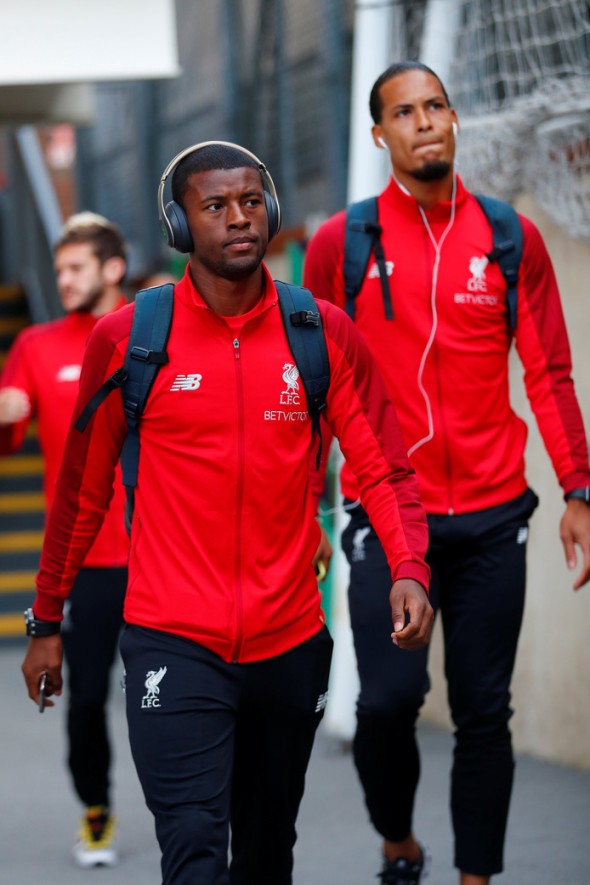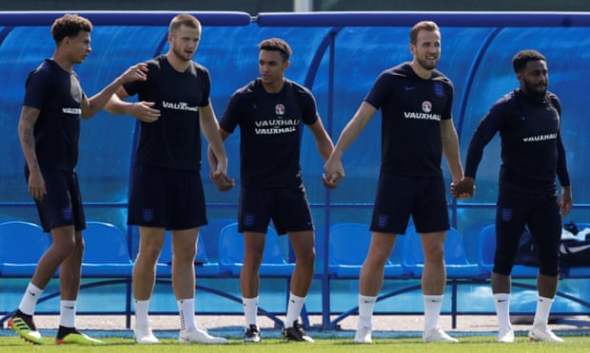Europe’s National League What is it? Why is it?
Posted: June 1, 2019 Filed under: Uncategorized Leave a commentThis week, in addition to a number of international competitions in which the USA is participating, there is an important one involving a few European teams in which the USA is absent (since we are not European). These matches are very different from the decades of international games, both friendly and not, that have preceded them. In order to understand the difference and the controversy surrounding the new format for international teams in Europe, we should review the standard organization of club teams and their international counterparts.
Club teams operate in the same structure in almost all the world, with one notable exception…..that being the good ol’ USA. In their respective countries, club teams compete with other club teams in leagues. They try to win as many games as possible in order to win the championship of the league or to place as high as they can. Nothing unique about that, is there? But the similarity with American sports leagues ends there. It is standard for soccer organizations around the world to operate more than one league, with the number of leagues being dependent upon the size of the country. Teams can move up and down, from one league to another each new season. Their movement is based upon their finish in the league in which they are playing that year. If they finish high enough, a club team can move up from a lower league to a higher one. Conversely, if they finish low they can be “relegated” to the next lower division. The exact number of sides that move up or down varies with each country, but the “promotion – relegation” concept is very standard in the soccer world, the USA being the major exception to that format. Club teams also play in “cup” tournaments but the major number of games are in their leagues. International teams, those that represent a nation, have always operated in a different manner. Their format centers on tournaments of which the largest and by far the most notable is the World Cup held every four years. There are also smaller tournaments, more regional in nature, in which national teams compete. They are held in between World Cups. And there are typically a fair number of “friendly” matches in between those tournaments. Friendlies have always been used as tryouts for new players, new formations and as tests of relative strengths of various national teams. Their substitution rules are lax compared to “real” matches and often so many subs are used as to make any score of the contest virtually meaningless. Therefore attendance at friendly internationals can be spotty at best and club coaches can be irked (to say the least) at having their best players risk injury and develop fatigue when playing these friendly matches for their country.
So, UEFA, the governing body of European soccer, decided to make a change. They reduced the number of friendlies by using dates usually used for those matches to stage matches as part of a league, supposedly similar to the leagues in which club teams play. This Nations League would be important for two reasons, one – performing well could gain a nation entry into the European Cup tournament , held every four years in the middle of the break between World Cups. The Euros, as the tournament is called, is considered as second only to the World Cup in importance and is watched by almost as many followers of the sport around the world. Second, since there are 55 soccer playing European nations, UEFA decided to divide them into leagues, four of them, based on strength of the teams and to use promotion and relegation to move the best and worst of them up and down, just like the clubs.
Ok, fairly simple so far, yes? Four leagues of European national teams, based on ability, with winners moving up and losers moving down. Easy. Well, please pay attention because it is about to get more complicated.
It seems that there aren”t enough play dates for teams to play each team in their league. Take the A league…. the best teams. There are 12 of them in the league, but playing 11 matches, given the few dates available during the year when the clubs are given the weekend off, would take the league far too long. So, the leagues are broken up into “groups’. The A league has four groups each consisting of three teams. The groups were decided by drawing, using a seeding system based on prior results. This theoretically would keep the groups even in competitiveness, each with a very strong team, a mediocre team and a comparatively weak one. Theoretically.
These were the UEFA Nations League A groups:
League A
- Group 1: Germany, France, Netherlands
- Group 2: Belgium, Switzerland, Iceland
- Group 3: Portugal, Italy, Poland
- Group 4: Spain, England, Croatia
As one can see, the groups were not exactly even in strength. Group 1 featured all heavyweights, even if Germany didn’t fare so well in the World Cup and the Netherlands seemed to be in a downswing. Group 2 had a good Belgium squad matched with up and down Switzerland and weak Iceland. Group 4 was almost as strong as group 1 including Spain – aging but talented, World Cup finalist Croatia and England, always good, just never quite good enough. But here is the kicker (no pun intended): The top team in each group ( they play home and away with each competitor therefore only 4 matches decide the final standing of the group) goes on to the semifinals against the winners of the other groups, while the loser GETS RELEGATED. That’s right- all four of the bottom teams in each group go down to league B in the next Nations League competition in 2020. Assuming this league draws the attention that UEFA hopes for, that could be a major loss to some pretty decent nations, given the makeups of the groups.
The group matches were played in the fall of 2018. The semifinals are this week. Here are the results.
There were some definite surprises . Netherlands woke up from their 2 year slumber to take Group 1. England finally lived up to their potential to get past the Spanish while the Swiss scored a mess of goals on hapless Iceland and then rolled over a Belgium side missing some key players. The only predictable finish was Portugal taking Group 3.
But the list of relegated nations is somewhat shocking with its inclusion of Croatia and Germany…..yes Germany. Croatia finished runner-up in the World Cup, but couldn’t continue its run of over-the-top play. But Germany proved that it’s poor World Cup was not a fluke, although the point could be made that it was in a ridiculously tough group when compared to Group 2.
The semifinals are this week with the surprising Swiss playing Portugal and the English battling Netherlands while trying to claim their most international glory since they won the World Cup in 1966.
Assuming one understands the league structure, it appears basic at this point in this regard: England plays Netherlands this week for the right to play in in the Nations League final. But there is a complicating factor and it points out the overriding controversy in the existence of the Nations League.
On June 1, just 6 days before the England- Netherland match, Liverpool and Tottenham Hotspur play a HUGE match for the championship of all club teams in Europe. This is a match which takes a large physical and mental toll, it is the Superbowl of European club soccer. The Dutch have two vital stars playing for Liverpool. Virgil Van Dijk is considered arguably the best defender in the world and Gini Wijnaldum scored twice for Liverpool in their amazing comeback against Barcelona. Is it too much to expect them to give 100% for club on Saturday and then again for country the following Thursday? How can they get past whatever the outcome Saturday to be ready for a battle on Thursday?
England is in the same situation, but even more so. As many as nine players on the the two teams could see action Saturday in that so big game while then playing again on Thursday.
In addition to the problem of playing two very important games in such quick succession, there is the added complication of the make up of the opponents. As a former coach of both club and school teams, I faced the complexity of coaching players one season in the club, and then coaching against those same players the next school season. Of course, the players were faced with the “play with you – play against you and visa versa” situation to a greater extent than I was. In the case of England and Netherlands, these players- professional or not- are still humans and many of their teammates and opponents will switch those roles only 6 days later. The ability to adjust to that situation may have a bearing on the outcomes of those matches. While the dichotomy of club and national players interacting with each other cannot be avoided, this closeness of the dates of these meaningful matches is rare. Friendlies between national teams did not carry the physical, mental and emotional stress that these contests entail. So, how come the new leagues?
The answer is money and assumed importance. Friendlies draw fewer attendees, even the players themselves sometimes skip them. UEFA was concerned with the added attention ( press, tv, internet) that club soccer has been generating in recent years to the detriment (well, perceived detriment) of the national team version of the sport. So, fewer friendlies and more “real” games was the answer. What remains to be seen is the effect on the players considering the frequency of these matches with so much riding on them. What will be the injury rate?, the ” burn-out” factor?, the long term effect on the careers of the players involved? How long before some clubs, watching their investments risk body and mind for an ever increasing number of international contests, just say no? There is no world wide soccer police that could stop 10 or 15 or 20 of the top clubs from just dropping out of FIFA and sponsoring their own league, paying the highest salaries, and telling their players they don’t need to play for their country if they don’t want to do so. Just look at the NBA and how many of their stars forego international basketball. Too much of a good thing can be dangerous, in this case dangerous to international soccer.




Recent Comments